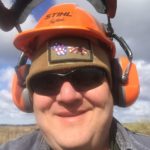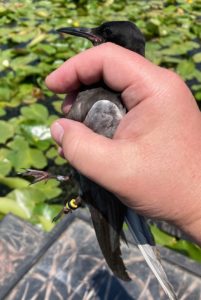 By Mike Alaimo, Lead AWA Volunteer
By Mike Alaimo, Lead AWA Volunteer
This article originally appeared in Wisconsin Waterfowl Association’s July, 2021 Newsletter edition.
After all of these years working on Rome Pond with Black Terns, I would not have imagined that we could expand our nesting program to grow to eight platforms and have seven of them be successful, let alone to be able to hold these birds in my hands, while also making history.
In mid-June, I had the pleasure of meeting an expert on Black Terns, Dr. David Shealer from Loras College. Dr. Shealer has been working with Black Terns for over twenty years. As a result of some quick correspondence and planning, we met on Rome Pond for a small project that could have a bigger impact on Black Tern conservation.
The project was simple in theory. Band Black Terns. The process, however, was more involved than I could have imagined, and I have summarized the day’s results into a short presentation saved on our project page and linked here. It describes how we banded the Black Terns, recorded specifics of the birds and then deployed geolocating trackers on six Black Terns, which were the first deployed on Black Terns in the state of Wisconsin.
It was a special day and I hope we can continually grow the project on Rome Pond in the future.

